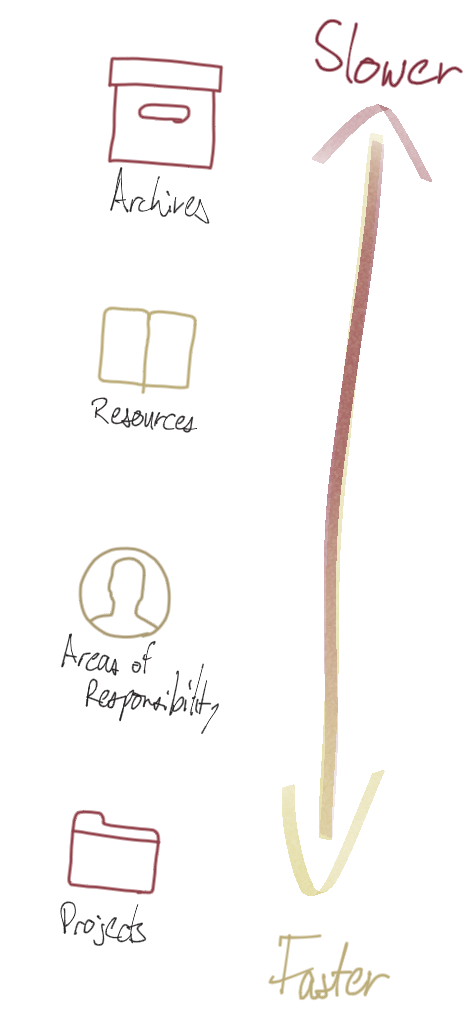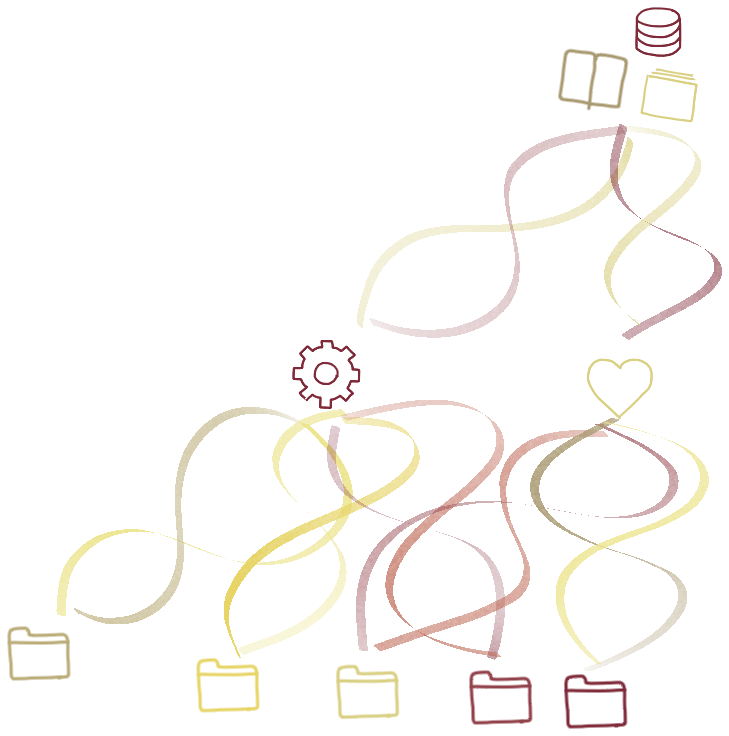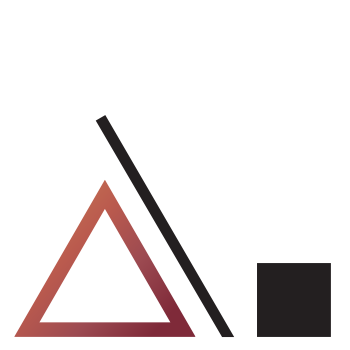Systemics and design principles in support of Tiago Forte’s PARA framework
Requisite variety, pace layers, and panarchy in Personal Knowledge Management
Where do you keep all of your files? How do you find the right materials for the task at hand? Are you making good use of all the work you’ve done in the past? Does your present-day learning build on what you did the day before?

No modern-day “knowledge worker” is a stranger to the confusion of managing the stuff they use to do their work. Everyone has a “system” (after all, even the lack of a system is a system) for how they organize folders, tag items, save files, and find stuff later when you’re ready to use it.
Sometimes these systems even work. In the past, I’ve found moments of peace just as a project begins, when I dump a few key items in a project-specific folder and everything is in its place. In these moments, my inboxes—email, task, paper, collaborative apps, notes apps, readings inboxes, browser tabs—are empty and waiting. I’m solely focused on this new initiative, and I’m ready to work.
Then the onslaught begins. I would be viscerally reminded that focus on one thing doesn’t mean everything else pauses. Messages, tabs, and desktop files would build up. I’m able to sort through the maelstrom until some vexing event captures my attention for a while as the onslaught continues. I return to the chaos. I stand atop the rubble, reach down at a few shiny things and put them in their place, and then I ignore the rest of the detritus… even adding to it with my own cruft. Eventually another moment of peace would settle on me and I’d clear the decks, only to repeat the cycle again.
Is this familiar to you? Is it sustainable for you?
Over the past few months, I decided that it had become all too familiar, and it was definitely unsustainable. I didn’t want to hoard the materials of my work. I wanted to have a place for everything useful and to get rid of the distractions, broken items, and finished things. I wanted this system to encourage me to engage more deeply with and to help me to save and recall insights. Ultimately I wanted my personal knowledge system to make future work easier, and therefore more possible.
Exploration led me to Tiago Forte’s work on Personal Knowledge Management (PKM) and “building a second brain” (BaSB).1 Tiago argues that excellent systems exist for managing our work—namely David Allen’s Getting Things Done (GTD). No such system exists, however, for managing the materials used in and produced by that work. So, he built such a system.2 Many of Tiago’s arguments and solutions resonated with me. If you find yourself constantly asking the questions at the outset of this article, or experiencing the unsustainable cycle described above, I suspect you’ll appreciate them too.
Tiago has plenty of resources out there detailing his ideas—some of it paid—and so I won’t rewrite that here.3 Instead, I will re-develop some of Tiago’s concepts from Building a Second Brain from some ideas related to systemic design.
Then, in my next post, I will explain why it didn’t completely work for me, and how a few subtle changes substantially improved the structure at the core of the Building a Second Brain system for me.
When we organize our (digital) files and materials, we probably all default to something like this:
- Create folders for areas of our lives. (E.g., “Work”)
- Create subfolders for sub-areas. Repeat until things are satisfactorily arbitrarily subdivided. (E.g., “Work”→“Office”→“Programs”→“Innovation and Entrepreneurship”)
- Sometimes, create some dates, if dates matter to the category of thing you’re organizing. (E.g., “Taxes”→“2019”; “Innovation and Entrepreneurship”→Winter semester 2019”)
- Maybe tag these items, typically with topical tags. (E.g., “Finances”, “program development”)
Then, when we receive, find, or create files associated with these areas, our process probably defaults to something like this:
- Save the file to the desktop, or the first place you think of on the device you’re working from.
- Save other files to the desktop, or the first place you think of. If this is on a different device.
- At some point, realize there’s files in different places. Consolidate.
- Possibly remember to tag them with the appropriate tags.

Trouble arises when we have multiple sub-sub-sub-sub-folders that relate to one another. Do you put that PDF in this folder or that one? Do you manually copy it so that it’s in both places? What if you add notes to one of those two files? Okay, maybe you’ll create a new subfolder that specifically identifies that PDF’s shared identity… but then do you have a folder with just one file in it?
We face further trouble we use different apps with closed, specific database/storage systems for different materials, such as email inboxes, note-taking apps, task apps, and so on. We follow a pattern similar to the above when organizing these places… but we don’t replicate the identical structure. So, we have slightly different organizing schemes in each of these different places.
Trouble also appears when we go to use the materials we’ve assembled. What’s your strategy for using all the resources you’ve gathered? You’ll first open up the relevant sub-sub-folder. Then, hopefully you’ll remember that there are other resources in other places (e.g., email inboxes, the desktop, that USB drive…). You’ll either consolidate all of those items (a distraction from the task at hand) or consciously try to think of all the relevant items in different digital workspaces. Either way, you face friction.
But there’s more trouble. What about that work project you finished two years ago? That folder is still sitting in your organizing system next to those two still-developing product ideas you have to share with your team, the notes from your last conference, and the active project’s you’re responsible for but that don’t really require your active attention. So while you’re searching for where to place or retrieve files relevant to the current initiative, you’re distracted by these old roots and new shoots, none relevant to the task at hand.
I could go on, but the point may now be obvious. The default mode of organizing simply does not support how we actually work. There’s a systemic reason for that. That is Ashby’s law of requisite variety: any system must be at least as complex as that which it controls.
The reality is that our work is complex. Projects and responsibilities relate to one another in many different ways. They’re also dynamic: the files for a finished project become useful for a new one; a side project needs to be put on hold until next year. Some items are needed for every day this week and then (probably) never again. Others are useful on the second Thursday of every second month.

At the same time, overly complex systems fail, too. Tagging is an example of this. Tagging is wonderfully flexible. You can create a tag to represent any attribute with any organizing scheme you’d like.4 You can tag any number of items across any number of folder hierarchies with the same tag. Sadly, this quickly grows out of control, as you have to consciously recall every kind of tag to add to every kind of item you save or create. We must remember “Einstein’s razor”: make things as simple as possible, but not simpler.5
The default approach to organizing cannot be reconciled with this need for both simplicity and complexity. Luckily, the solution is not as mind-bending as all of our responsibilities can be.
The problem in the “default mode” is that a hierarchy of topics fails to represent the true complexity of the work. Topics and areas quickly fail as an organizing paradigm when implemented at modern speeds and scales. So, how might we design a better approach that meets the complex needs of our work without overcomplicated effort?
To develop that solution, we turn to a different idea from design: pace (or shearing) layers. Pace layers describe how different levels of a structure change at different speeds. In a building, the ground almost never changes. The foundation built on that ground can only be changed with great difficulty, the infrastructure (plumbing, wiring, etc.) can be changed with a little less difficulty, and so on—until you reach the furniture of the place, or even the people in it, which changes rapidly and easily.
Of course, our organizing systems are structures, too. What does it mean for your organizing system to have pace layers?

Some of the materials we save and use are fundamental—as permanent and unchanging as the earth supporting the floors underneath our feet. The projects we’ve already finished are examples of this. These items show where we’ve come from, but we don’t really need to actively remember that they’re there or use them in every action. This is our archive.
Other items are semipermanent, like the walls, windows, and doorways of a room. They become fixtures in our work. We need them when we are making moves, but not usually while we’re fixed in place. These are our resources.
Still other collections of materials are like the purposes of a room. You may use your living room to watch TV, host a party, or as extra seating for a particularly large meal. These uses are generally related and relatively stable, but can change if necessary. Likewise the materials we save, create, and use generally conform to the purposeful spaces in our lives—our areas of responsibility.
The things in a structure are usually the easiest to change. You can move furniture, people, and objects around with relative ease. Likewise, you can create and delay and drop projects whenever you want.
Realizing that your work has pace layers—about four of them—reveals a new organizing scheme for your materials. Archive, resources, areas of responsibility, and projects are the four different “levels” of Tiago’s organizing structure, PARA. Crucially, each of these levels changes at a different pace. Archive should stay relatively the same, while Projects should be constantly changing.
Therefore these four levels have different levels of actionability. The items in your Projects should be acted on often and quickly. Something in your Archives should be put there and left there for a while, as undisturbed as the ground around a building.
The notion of pace layers—and their interactions—leads to a final concept from systems and design that proves useful in PKM: the panarchy cycle.
Panarchy is a term coined by scientists C. S. Holling and Lance H. Gunderson to describe the resilient and chaotic complexity of economic, ecological, and social systems.6 In their studies, they found common patterns of hierarchy and adaptive cycles across domains and scales. Their term combines the idea of the Greek god of unpredictable change, Pan, with the notion of hierarchies across scales. It explains how emergent systems—e.g., an ecosystem or a community—are able to experiment, evaluate results, and evolve based on those results. This is made possible through simultaneous, interlocking cycles of creative destruction.
Panarchic cycles follow four stages in no particular order: exploitation, conservation, release, and reorganization. Larger-scale panarchic cycles are able to take advantage of this action at smaller scales in order to grow.
The four pace layers of PARA (from fastest to slowest: Projects, Areas of Responsibility, Resources, and Archive) represent four levels of a panarchy. Projects should be moving quickly and should be numerous. Learning from our Projects should inform and shape our Areas of Responsibility, which then further direct the initiation and collapse of Projects. Acting on our Areas of Responsibility and conserving learning and resources from that action likewise informs our Resources, which in turn helps reorganize the Areas. Finally, all three feed into Archives and are occasionally reshaped by Archived work.7

The key lesson here is in how pace layers and the panarchy structure align to inform how we should be managing the materials of our work. These concepts re-emphasize the notion that Projects should be fast-moving while Areas move slower and Resources and Archives move slowest of all. They also reinforce the idea that these areas inform one another. Slower layers set boundaries on what can happen on faster layers; layers higher in the panarchy depend on the learning and innovation on lower levels.8
These layers give us a better organizing paradigm, too. This four-layer scheme acknowledges that the resources we manage perform different functions, move at different speeds, and exist at different stages of a lifecycle. These speeds and functions are embedded in the properties of the four layers intrinsically, giving us a structure that is both as complex as our work while also simplifying how we engage with that work.
I implemented a variant of PARA a month or so ago. Thus far, this new approach has served me well. It’s less overwhelming to pull up new work because the Projects category contains only those things that are actually active and ongoing. The connection between the materials of those projects and the items in my Areas of Responsibility and Resources is more intuitive. This way of working seems much more accessible, sustainable, and maintainable over time.
But, to make it work, I had to make some changes. More on that in a future post.
Tiago offers an (expensive) online course with exactly that title, but I haven’t taken it. I was able to learn what I needed by listening to quite a few of Tiago’s appearances on a variety of podcasts and by paying for a month’s subscription on his membership site.↩︎
As a result, some have called him the “next David Allen”. Tiago’s definitely developed some powerful additions to GTD, but one of David Allen’s key contributions is not only developing the work but proselytizing it so effectively. I think Tiago has a career to go before he can be given that title!↩︎
Maggie Appleton has taken the course and published some gorgeous illustrations summarizing some of the takeaways.↩︎
You can even create artificial hierarchies in flat tagging systems, as demonstrated by Brett Terpstra.↩︎
Like most great quotes, it appears that this is a paraphrasing. See Wikiquote’s discussion, and a relevant QuoteInvestigator post.↩︎
Holling wrote a concise and accessible synopsis of the concept.↩︎
The awkward lack of symmetry in the link between Archives and the Projects, Areas, and Resources is part of what inspired the changes I implemented in PARA. More on that in part two.↩︎
This hints at patterns of creative destruction that should be common in knowledge work, which may be an interesting subject for a future post.↩︎

